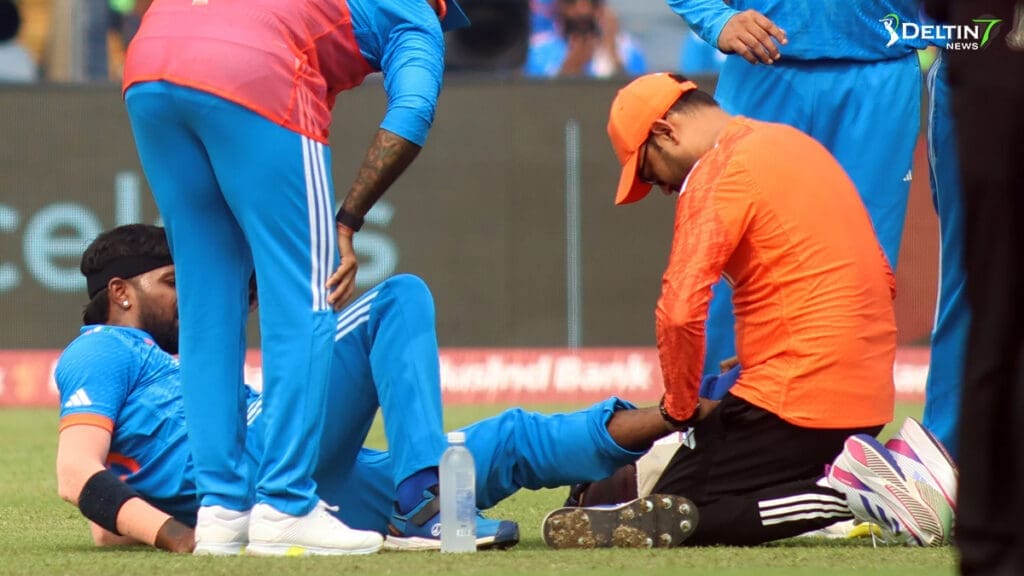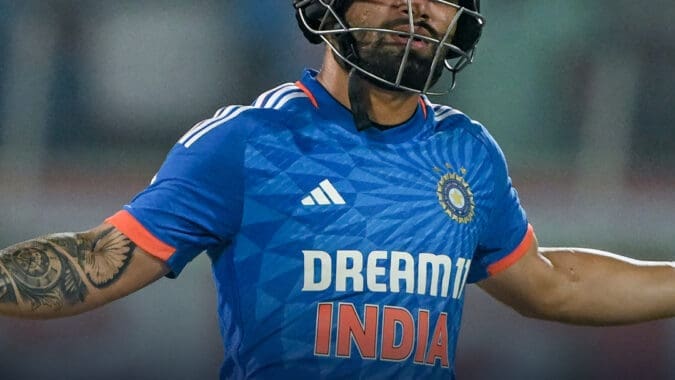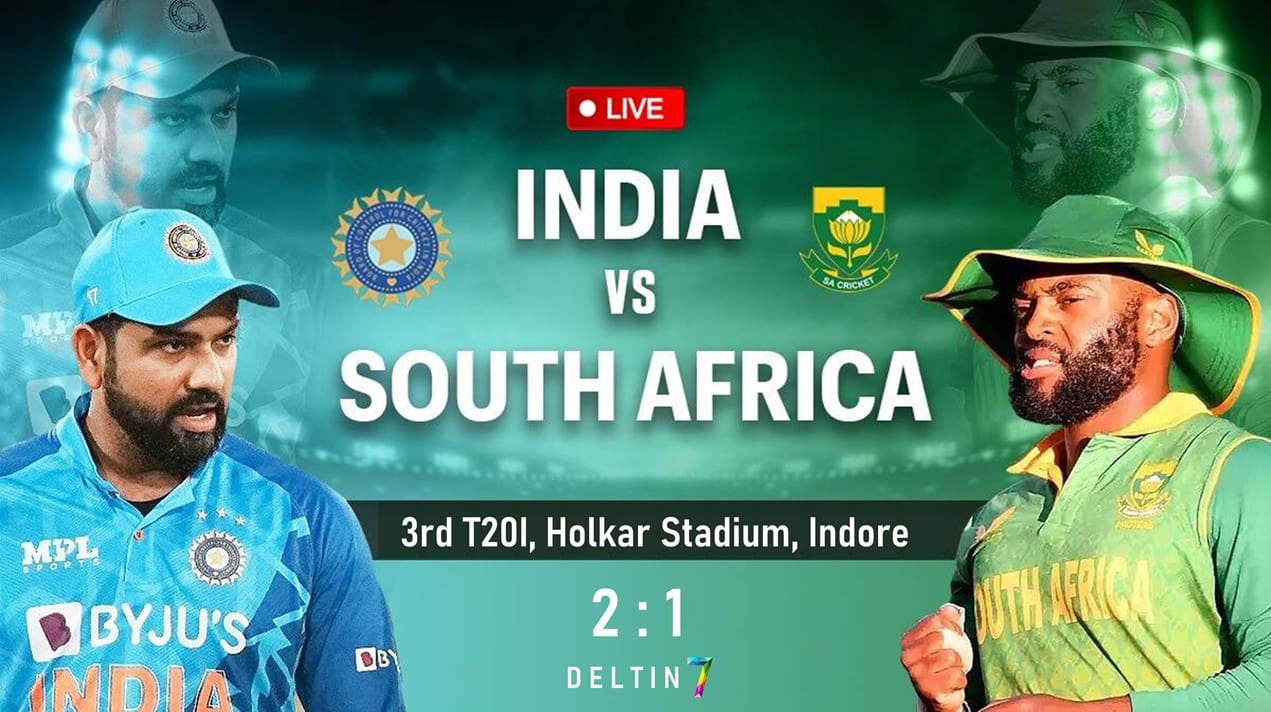
In the match against Bangladesh, Hardik Pandya is injured
In a thrilling World Cup contest between India and Bangladesh, all-rounder Hardik Pandya suffered an injury scare that left fans and teammates concerned. This article provides a comprehensive update on the incident, explores the impact of Pandya’s potential absence, and analyzes the implications for the Indian cricket team.
The Injury Scare
During the fourth league match of the World Cup, held in Pune, Pandya appeared to twist his left ankle while bowling his first over. The incident occurred during his follow-through, causing immediate concern among the team and fans. The physiotherapist rushed to his aid, providing initial treatment on the field.
The Assessment
After being attended to by the physiotherapist for several minutes, Pandya attempted to continue bowling but was in too much pain to do so. He walked off the field at 2:59pm, an hour into the game, seeking further treatment. It was later announced that he would not return to the field for the remainder of the innings. The severity of the injury is yet to be determined, and Pandya has been sent for scans to assess the extent of the damage.
The Importance of Hardik Pandya
Pandya’s absence would be a significant blow to the Indian cricket team. Alongside Jasprit Bumrah and Kuldeep Yadav, he is considered one of the most irreplaceable players in the squad due to his all-round abilities. Not only is he a skilled batsman, but his bowling also provides India with the much-needed sixth bowler. In the first three World Cup matches, Pandya had already taken five wickets, showcasing his value to the team.
Potential Replacements
If Pandya is unable to play, the Indian team will face a challenging decision regarding his replacement. Shardul Thakur, a specialist fast bowler who can also contribute with the bat, is a possible option. However, Thakur has only bowled eight overs in two matches, indicating a preference for Pandya’s versatility so far in the tournament. Another option would be to bring in an extra batter and rely on the existing five bowlers to cover the 10 overs each.
India’s Unbeaten Streak
Despite the injury scare, India has had an impressive start to the World Cup, winning all three of their matches. They are currently one of two teams that remain unbeaten in the tournament, with their next fixture scheduled against New Zealand. The clash with New Zealand will be a crucial test for the Indian team, especially if Pandya is unable to play.
Hardik Pandya’s Importance to Team Balance
The Indian team has been cautious with Pandya’s workload leading up to the World Cup, recognizing the balance he brings to the squad. His presence allows India to play three spinners and three seamers, providing versatility in their game strategy. Losing Pandya would force the team to reassess their approach and potentially compromise their balance on the field.
The Impact on India’s Bowling and Batting Lineup
Pandya’s absence would not only affect India’s bowling attack but also disrupt their batting lineup. As a specialist batter, Pandya has the ability to contribute significantly with the bat. His absence could potentially disrupt the team’s middle-order stability and put additional pressure on the top-order batsmen to perform consistently.
The World Cup Journey Continues
As the World Cup journey continues, India will closely monitor Pandya’s recovery and assess his availability for future matches. The team remains hopeful that the injury is not too severe and that Pandya will be able to return to the field soon. In the meantime, the Indian team will need to adapt and find suitable alternatives to fill the void left by Pandya’s absence.
The Potential Replacements and Strategies for India
The potential absence of Hardik Pandya from the Indian cricket team poses a significant challenge as he is one of the most versatile players in the squad. To compensate for his potential loss, the team management will need to consider various options and strategies.
Potential Replacements
1. Shardul Thakur: Shardul Thakur, a specialist fast bowler, is a likely candidate to replace Pandya. Thakur has shown his ability to contribute with the bat as well, making him a suitable choice to fill the all-rounder’s role. However, his limited bowling in the tournament so far indicates that the team might miss Pandya’s bowling prowess.
2. Extra Batter: Another strategy could involve bringing in an extra batter to bolster the batting lineup. This approach would rely on the existing five bowlers to cover the full quota of 10 overs each. It would essentially sacrifice the all-round capabilities Pandya brings, but it might provide added stability to the batting order.
3. Specialist Bowler: Depending on the pitch conditions and opposition, the team might opt for a specialist bowler in place of Pandya. This choice would shift the balance more towards the bowling department, with the top-order batsmen expected to shoulder additional responsibilities.
Altering Game Strategy
Pandya’s absence would force the Indian team to rethink their game strategy. Here are some potential alterations they might consider:
1. Change in Bowling Combination: With Pandya being a key part of India’s bowling attack, his absence might lead to a change in the bowling combination. The team may need to rely more on the spinners and fast bowlers while rotating the bowlers strategically to cover Pandya’s overs.
2. Middle-Order Reshuffle: Hardik Pandya’s role as a finisher in the batting order is crucial. His absence would necessitate a middle-order reshuffle, with other players needing to step up to the task of finishing innings and providing impetus to the score.
3. Tactical Flexibility: The team will need to be more tactically flexible and adapt to the situation. The captain and coach may need to make on-field decisions based on the conditions, the opposition, and the form of the players. This adaptability is essential in the absence of a key all-rounder like Pandya.
Impact on Team Morale
Beyond the technical aspects, Pandya’s absence could also have an impact on team morale. His presence in the squad not only boosts the team’s performance but also brings a sense of confidence and camaraderie. Players might need to adjust to the absence of a reliable teammate, and the team management will have a role to play in ensuring that the players remain focused and motivated.
Scenarios and Contingency Planning
The severity of Pandya’s injury is yet to be determined. The team will be closely monitoring his recovery and conducting further assessments to decide whether he can participate in the upcoming matches. To prepare for various scenarios, the team management should have a contingency plan in place.
1. Best-Case Scenario: In the best-case scenario, Pandya’s injury might turn out to be less severe than initially feared, and he could return to the squad after a brief rest. The team would then adjust its strategy accordingly.
2. Medium-Case Scenario: In a medium-case scenario, Pandya might need a longer recovery time but could potentially return later in the tournament. In this case, the team would need to adapt to his absence temporarily and make the best use of available resources.
3. Worst-Case Scenario: In the worst-case scenario, Pandya might be ruled out of the tournament. This would be a significant blow, and the team would need to make more substantial changes to their strategy and playing XI. In conclusion, Hardik Pandya’s injury during the World Cup has put the Indian cricket team in a challenging situation. His all-round skills, including his batting and bowling prowess, make him an irreplaceable asset.
The team will need to carefully consider their options and adapt their game strategy to compensate for his potential absence. As they continue their World Cup journey, the coming days will be crucial in determining the extent of Pandya’s injury and its impact on India’s campaign. Fans and teammates will be hoping for a swift recovery, but the team must be prepared for various scenarios and make the necessary adjustments to remain competitive in the tournament.













